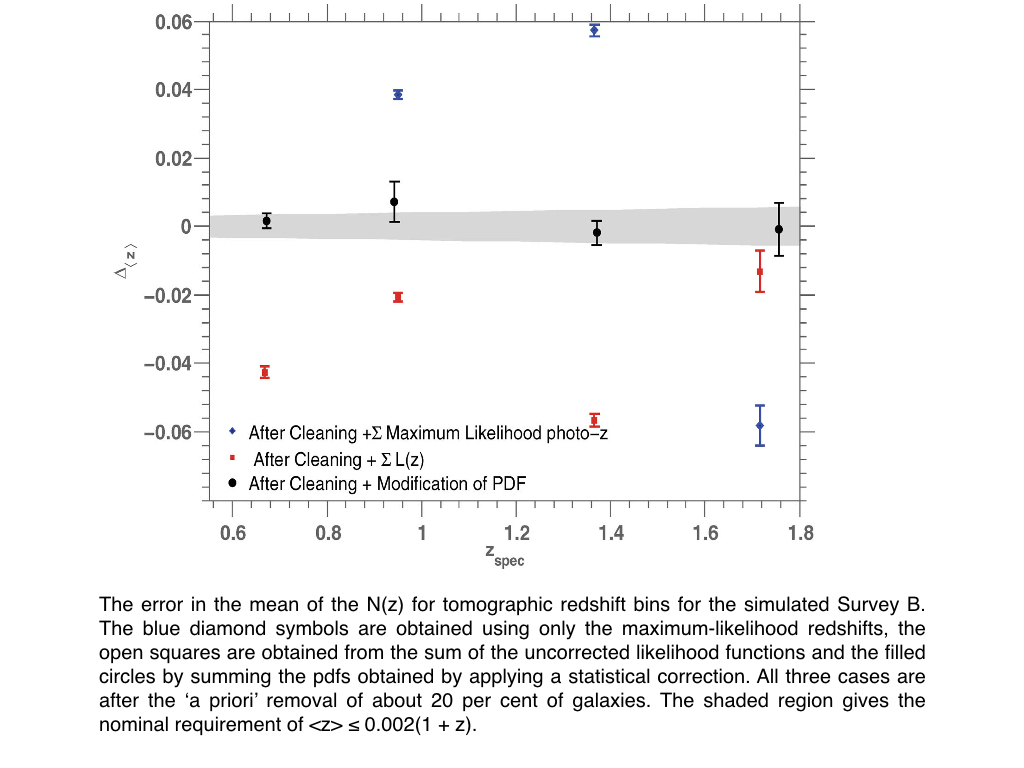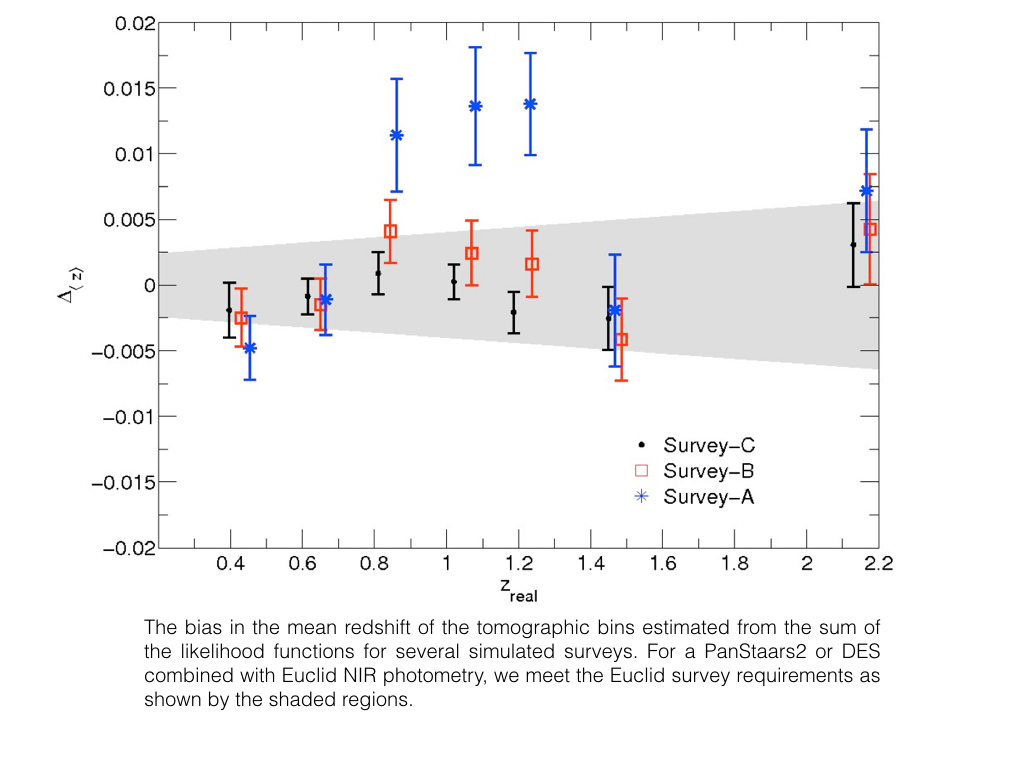
Photometric Redshifts
Photometric redshifts are crude distance estimators to distant galaxies. In absence of spectroscopic information, photometric redshifts provide vital distance information for cosmological stidues.
Photo-z performance for precision cosmology - II. Empirical verification: :

The success of future large-scale weak-lensing surveys will critically depend on the accurate estimation of photometric redshifts of very large samples of galaxies.
This in turn depends on both the quality of the photometric data and the photo-z estimators.
In a previous study, we focused primarily on the impact of photometric quality on photo-z estimates and on the development of novel techniques to construct the N(z)
of tomographic bins at the high level of precision required for precision cosmology, as well as the correction of issues such as imprecise corrections for Galactic reddening.
We used the same set of templates to generate the simulated photometry as were then used in the photo-z code,
thereby removing any effects of 'template error'. In this work we now include the effects of 'template error' by generating simulated photometric data set from actual
COSMOS photometry. We use the trick of simulating redder photometry of galaxies at higher redshifts by using a bluer set of passbands on low-z galaxies with known redshifts.
We find that 'template error' is a rather small factor in photo-z performance, at the photometric precision and filter complement expected for all-sky surveys.
With only a small subset of training galaxies with spectroscopic redshifts, it is in principle possible to construct tomographic redshift bins whose mean redshift is known,
from photo-z alone, to the required accuracy of |Δ
Photo-z performance for precision cosmology :

Current and future weak-lensing surveys will rely on photometrically estimated redshifts of very large numbers of galaxies.
In this paper, we address several different aspects of the demanding photo-z performance that will be required for future experiments,
such as the proposed ESA Euclid mission. It is first shown that the proposed all-sky near-infrared photometry from Euclid,
in combination with anticipated ground-based photometry (e.g. PanStarrs-2 or DES) should yield the required precision in individual photo-z of σ(z) <= 0.05(1 + z) at IAB <= 24.5.
Simple a priori rejection schemes based on the photometry alone can be tuned to recognize objects with wildly discrepant photo-z and to reduce the outlier fraction to <=0.25 percent
with only modest loss of otherwise usable objects. Turning to the more challenging problem of determining the mean redshift